It’s been a while! Instead of focusing on my French and Haitian Napoleonic forces I’ve been dabbling in book reviews and writing about some bizarre quasi-historicals future nonsense, which, I’m sure we can all agree, is simply a distraction from true and pure wargaming: Napoleonics.
For various personal reasons I’ve ended up having less time and space to play, or travel to, games this year. One of the big barriers is not having a board and terrain set in my home, particularly not having one that can be easily set out, moved around and packed up. I don’t really have the space for a full traditional 6×4 foot board, and I don’t have masses of storage space for 28mm terrain. Luckily, towards the end of my year exploring Napoleonics in my Road to Austerlitz, the solution presented itself – a 6mm modular board to match my Haitian army. A first flurry of making and painting left me with some nice little tiles of terrain, but as always, no plan or scheme to turn that into an actually doable project. Turns out that I really need the pressure of an upcoming article deadline to make me plan, so today begins a short series on how this project is going to work, what I’m going to do and, finally, showing off a board fit for 6mm gaming.

What’s the Plan?
The big aim here is to have a board that can be easily put away, suits stripped back rulesets or amended, simplified systems and scales to my 6mm Haitian army. There’s a couple of things that need to be taken into account to achieve that:
1. The board needs to have space for my 6mm bases to move around relatively freely
2. It needs to be modular – rearranged for different battles in a way that feels like a very distinct set up each time
3. Terrain needs to pack away into a shoebox or similar size that will fit on my model storage shelves
4. It needs to “feel” like early 18th century Haiti and match with my 6mm basing scheme
5. It needs to fit on a roughly square bit of thick MDF that I’ve got left over from a carpentry project
The solution to this was fairly obvious – tiles. Tiles of terrain that could be picked up and placed around the board, each with a certain terrain type that could be rearranged into a huge variety of battlefields. That would let me pack the board away, rearrange it in lots of different configurations and pack it up and away when out of use.
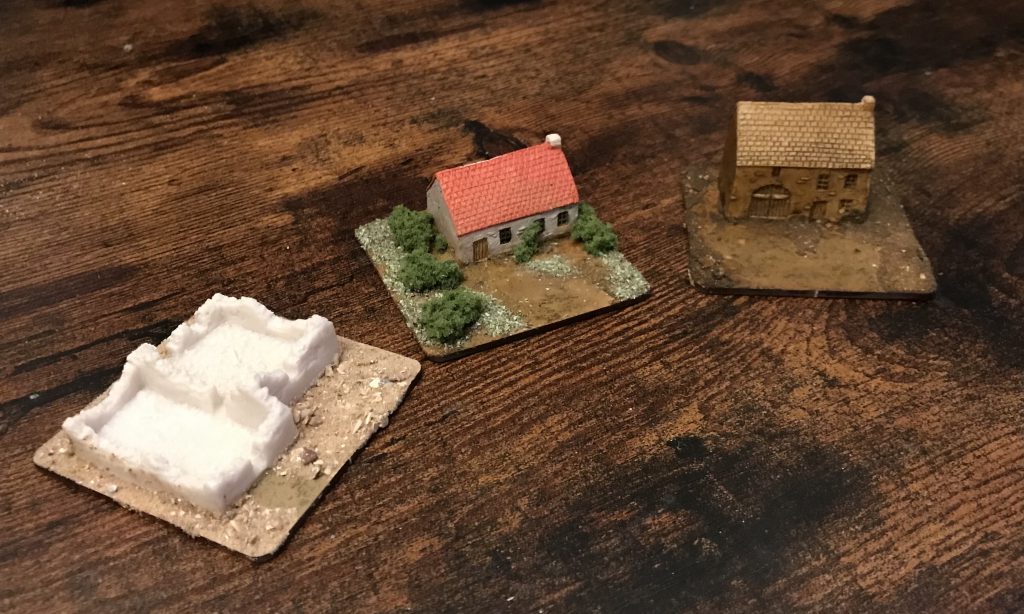
Le Carrelage
The tiles idea immediately needed some work. I’d stuck some fantastic buildings from Battlescale onto spare 50x50mm bases, but with the size of board I’m aiming for that would mean doing 100 individual tiles – some of them likely to be nothing but flock, but still a huge amount of laser cutting, sticking, painting, etc.

Trying to do this given my time, space, and storage limitations is functionally impossible. 100 tiles gives a maximum of modularity, but also means that larger terrain items would need to be split across two tiles – a large forest, or burnt sugar cane fields, rocky escarpment or similar – which would then leave me with lots of “bits” of big terrain, but no significantly large pieces. Going a bit larger with the tile layouts using combined 50×50 tiles, using a size and layout consistent with the grid plan will save time and let me create much bigger terrain pieces. Some examples of this are below:

With the above – 2 hills and forests, 2 cane fields and 3 homestead fields alongside a lake and warehouse – we’ve accounted for 46 of the 100 planned tiles, and both hills and forests could be significantly larger. As long as the shapes tesselate, and they should, given the use of a consistent grid for their shapes, they will remain modular enough to switch them around, with plenty of space for scattered buildings and other single tile layouts. The asymmetric layouts of the cane field and the warehouse and yard do admittedly restrict where they could go, but we’ll cross that bridge when we come to it.
What did Haiti look like?
The big question then becomes what Haiti actually looked like during the revolution. That’s complicated on a number of grounds, and much more difficult than asking what Paris or London looked like during the Napoleonic wars. For one thing, I can’t just hop on a bus (London) or train (Paris) to go and check out buildings in Port Au Prince. The other main thing is what Haiti do I want to show off here? The “look” of Haiti now is well documented, so that will do for much of the forest and hill sections of the board, but towns and buildings will be a little more difficult. What has been preserved from the time is mainly colonial or post-revolutionary architecture which isn’t the kind of story I want my board to tell. The Revolutionary War was fought, and won, out in the countryside, so grand colonial theatres (of cruelty) aren’t interesting to me. I want to make Toussaint’s Haiti here, and then invite my friends to come over and get beaten by my mastery of the terrain.
One of the advantages of 6mm scale is that I can really go big with terrain – even on a small board like this a hill can really tower high above the models, a forest can be as big and imposing as they actually are rather than a couple of eight foot high trees, etc etc. That’s important here because if there’s one thing I do know about what Haiti looks like it’s that it’s got some serious mountains – Haiti, in the indigenous Taino, means “land of the high mountains”. So we know that mountains are going to figure here – mountains and rocky outcrops, cliffs, etc. These can – and will – be enormous in comparison to 28mm terrain where a hill is often the same eight as a soldier.

You can see this kind of relief in quasi-contemporary art. In the battle of Palm Tree Hill painting above, we’ve got Revolutionary troops occupying a proper ridge line, with more support (and in real life, artillery) high up above on hilltops. This was the kind of terrain the Haitian revolutionary army sought out and fought from – drawing colonial armies into traps where they could be outmanoeuvred, outfought and out thought using high relief or dense cover terrain. Haiti is a land of massive, steep and imposing hills and mountains that plunge steeply into lowland areas, so big, high mountains surrounded by other, flatter, tiles, should work. The Citadel Laferriere, an incredible example of African-Caribbean architecture and absolute top of my Napoleonic bucket list to visit, shows what I’m talking about here:
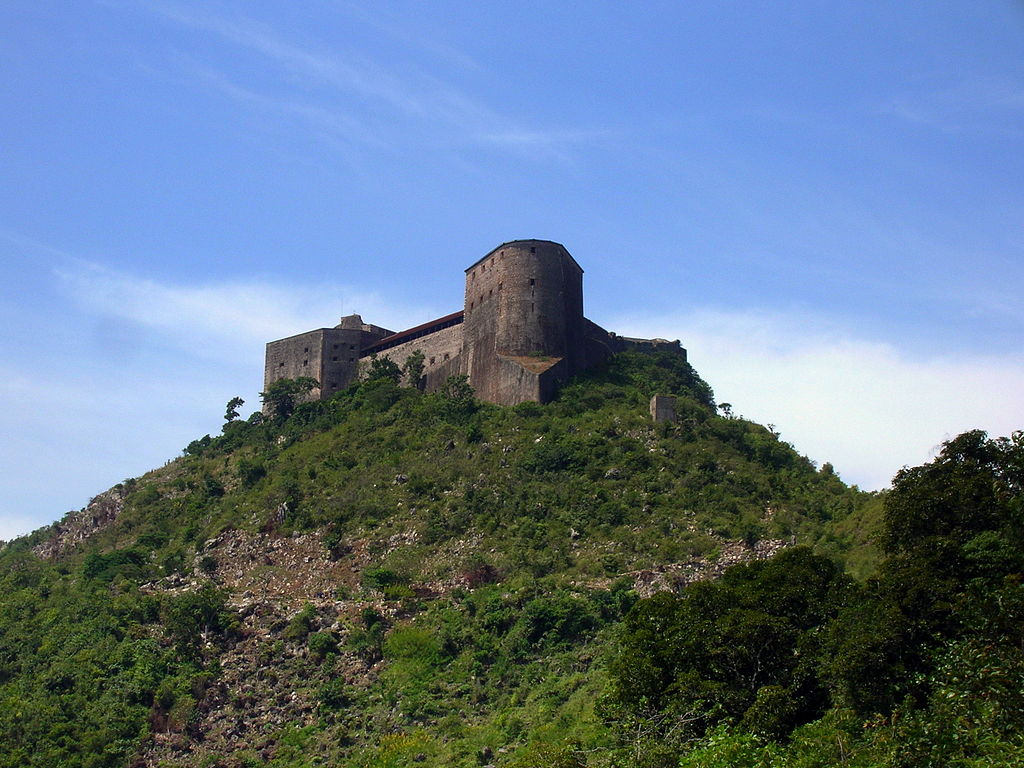
I started work on a quick mock up of the heights I’m thinking of using. Here, I’d want to keep the top of the terrain accessible – either using long or large pieces to provide a “ramp” up to the top of the hill, or building up on the tile itself to represent a cliff or fault escarpment. These heights will absolutely dominate the areas around them, providing a massive level of strategic challenge and narrative opportunity for battles on the board. As they’ll be modular and can be moved around freely before setup, if I want to play a battle that isn’t “take the heights”, they could be moved to the sides or corners to play less of an important strategic role, or become impassable movement blockers. When I say these will dominate the surrounds, I mean it – I pulled a big chunk of rock out of my rock collection (does it surprise you I have a rock collection?) to illustrate the kind of size I’m going for.
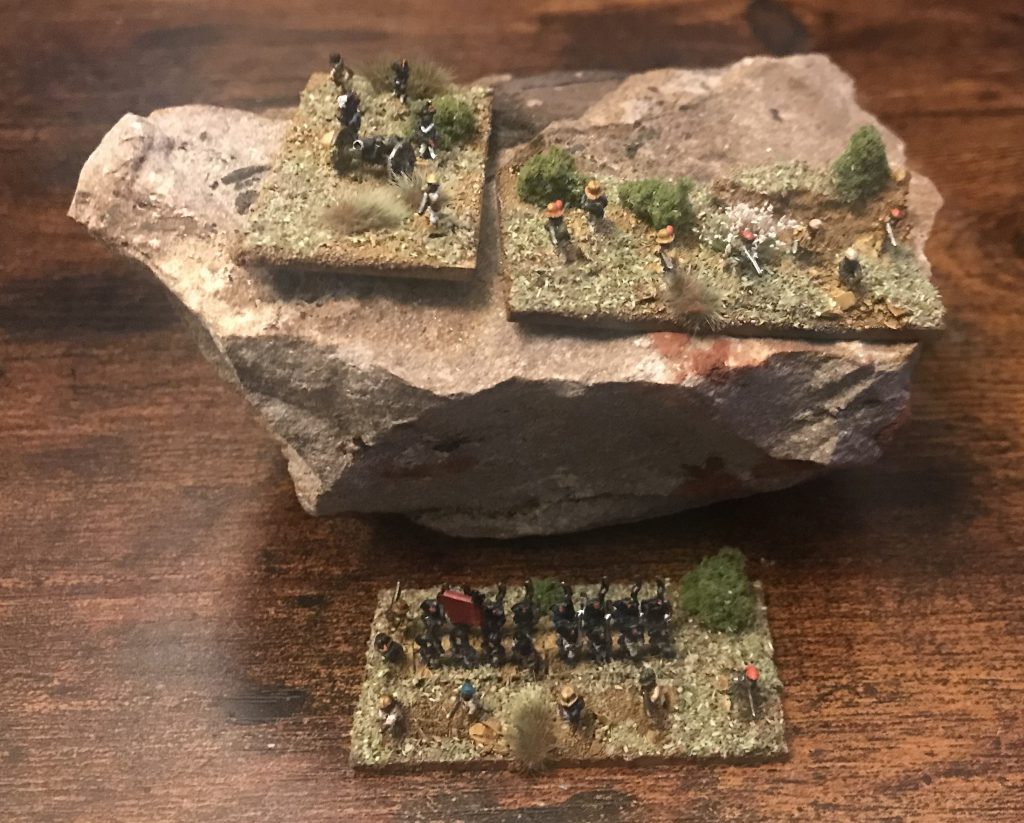
Forests are also a big part of the look I want for the board, and, unlike some other elements I’ll talk about a bit more below, I know what I want them to look like. At 6mm I’ve used some clump foliage on little wire trunks to do some of my trees and tiny palms out of wire and baking paper for others. These kind of small trees (see examples below) will feature on some of the less impassible forest tiles, but for my big, impenetrable forests I’m going to go very simple – a giant pile of clump foliage on a 50xWhatever mm base.

Building Haiti
I’ve got confused enough about what buildings looked like in rural Haiti that I think digging into that will form an article in and of itself, but the last major thing I am considering before starting is how to place buildings. As I’m working with my 6mm army, I want to use buildings in such a way that they look like a town or village, but also allow fully ranked line units to pass though without awkwardly perching them on top of the roofs or having to deploy into column. The placement of buildings on each 50×50 tile then becomes important, because if two building tiles are placed next to each other, they need to have space for a 50mm wide base to pass through.
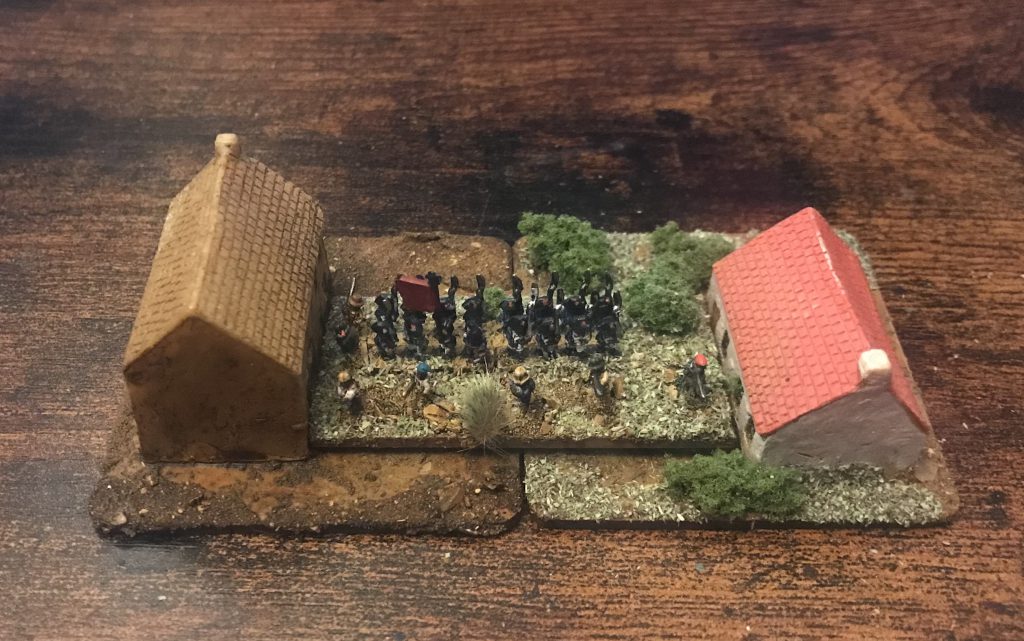
After a bit of experimentation that would probably have been immediately solved through a tape measure, I found that if the buildings were placed around 5mm away from one edge of the tile, there would be enough room to fit one of my line and/or cavalry bases between them. This means keeping a fairly clear passage on one side of the building tiles, but being able to create small alleys and ginnels between buildings when placed back to back. This will create some movement options around the board – areas impassible in towns to units in line, but perhaps passable at a penalty in column, or freely passable for skirmishers, allowing them to move through the town in any direction, with wide road spaces for line infantry and cavalry.
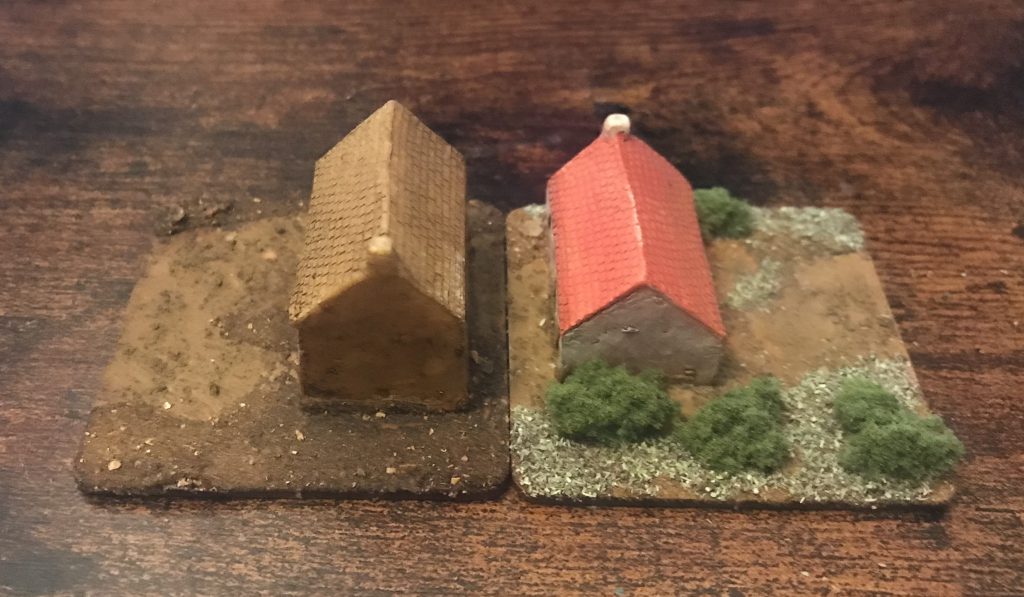
It was at this point I started feeling quite smug, got the MDF board out and started marking it up, only to find it was smaller than I thought and instead of a grid of ten tiles I had a grid of 9×9 with some extra space I’m sure I’ll find a use for. With one or two major hills, a big forest and several buildings, this might actually be a doable project after all. Inspiration struck right as I was starting to put this article together – those crosses in the middle of each square? Magnets!
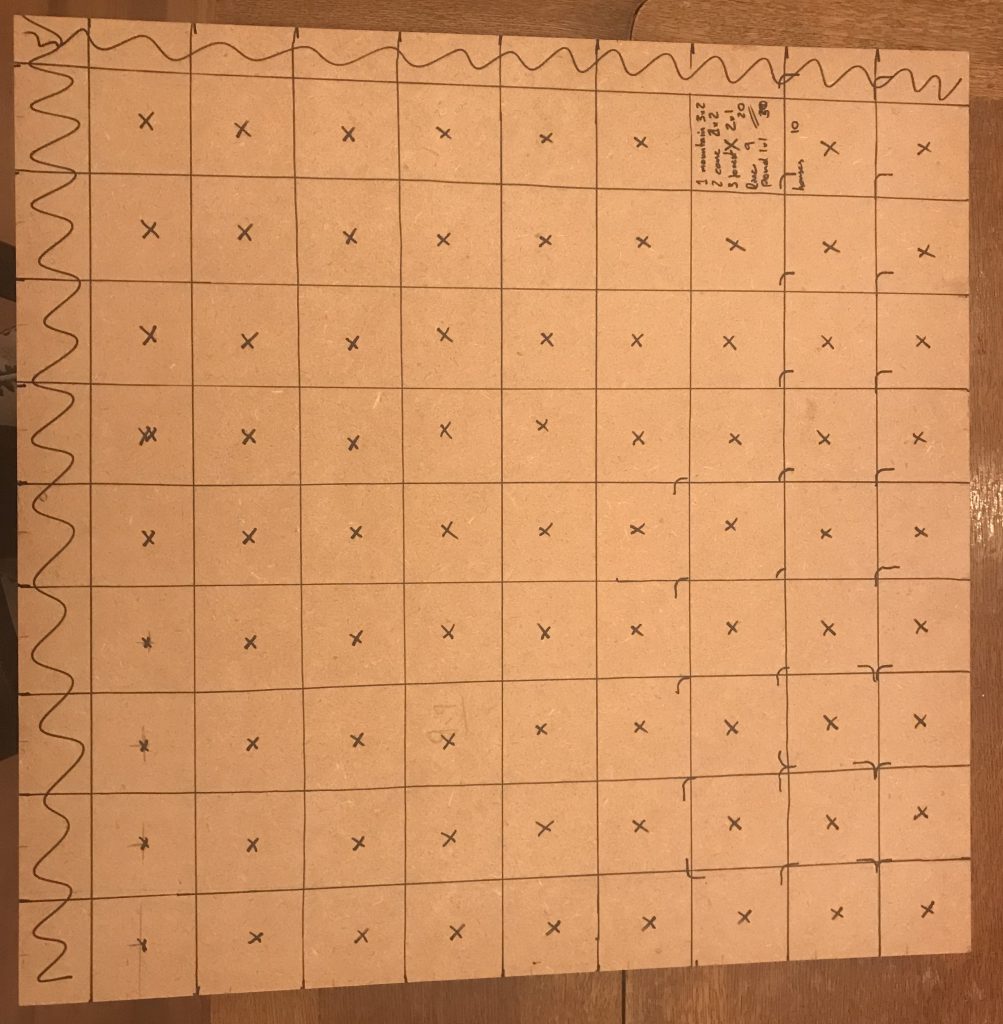
Since it’s technically still a road to Austerlitz article, I’ll do my usual reading recommend too. I’ve strayed out of my usual French and Haitian reading to catch up on the Hapsburgs, particularly after Enzo started his own Road to series on Napoleonics earlier this year. I picked up the mammoth For God and Kaiser by Richard Basset which, from it’s size alone, tells you its a fairly definitive history of the Austrian empire at war. I haven’t reached the Napoleonic section yet – still in the 17th century – but it’s a great read if you’re into the nitty gritty of early modern and napoleonic warfare (and you are, right? you’re here after all) and even might, just maybe, get me to reassess the efficacy of Napoleon’s private punching bag empire.
Next time: Building Forests, Forested Buildings
Have any questions or feedback? Drop us a note in the comments below or email us at contact@goonhammer.com.


